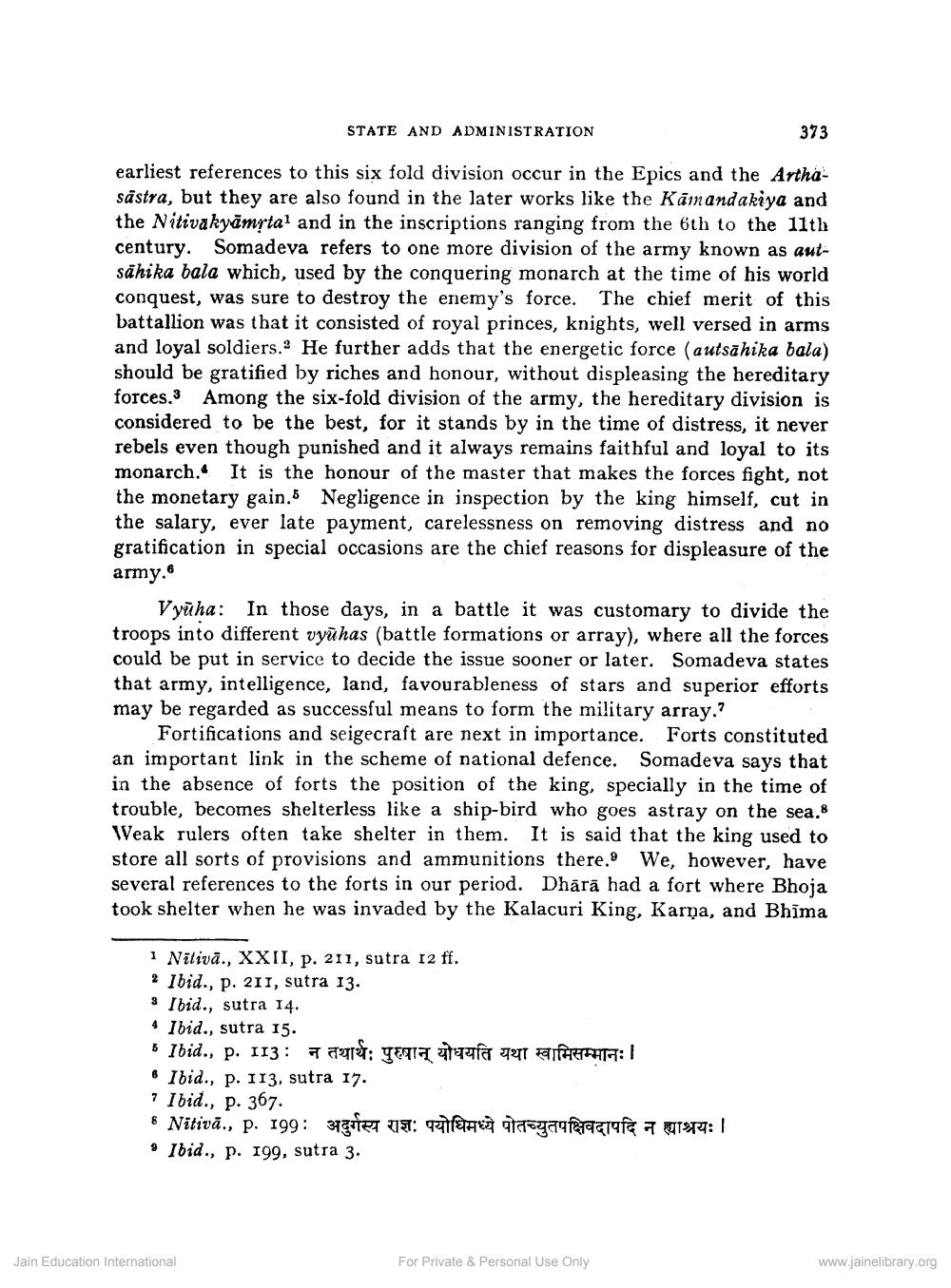________________
STATE AND ADMINISTRATION
373
earliest references to this six fold division occur in the Epics and the Arthasastra, but they are also found in the later works like the Kāinandakiya and the Nitivakyāmrtal and in the inscriptions ranging from the 6th to the 11th century. Somadeva refers to one more division of the army known as autsähika bala which, used by the conquering monarch at the time of his world conquest, was sure to destroy the enemy's force. The chief merit of this battallion was that it consisted of royal princes, knights, well versed in arms and loyal soldiers. He further adds that the energetic force (autsahika bala) should be gratified by riches and honour, without displeasing the hereditary forces,3 Among the six-fold division of the army, the hereditary division is considered to be the best, for it stands by in the time of distress, it never rebels even though punished and it always remains faithful and loyal to its monarch. It is the honour of the master that makes the forces fight, not the monetary gain.5 Negligence in inspection by the king himself, cut in the salary, ever late payment, carelessness on removing distress and no gratification in special occasions are the chief reasons for displeasure of the army.
Vyūha: In those days, in a battle it was customary to divide the troops into different vyūhas (battle formations or array), where all the forces could be put in service to decide the issue sooner or later. Somadeva states that army, intelligence, land, favourableness of stars and superior efforts may be regarded as successful means to form the military array.?
Fortifications and seigecraft are next in importance. Forts constituted an important link in the scheme of national defence. Somadeva says that in the absence of forts the position of the king, specially in the time of trouble, becomes shelterless like a ship-bird who goes astray on the sea.8 Weak rulers often take shelter in them. It is said that the king used to store all sorts of provisions and ammunitions there. We, however, have several references to the forts in our period. Dhārā had a fort where Bhoja took shelter when he was invaded by the Kalacuri King, Karņa, and Bhīma
1 Nilivā., XXII, p. 211, sutra 12 ff. 2 Ibid., p. 211, sutra 13. 3 Ibid., sutra 14. 4 Ibid., sutra 15. 6 Ibid., p. 113: 7 : TETIT a 991 FIFTFHT: & Ibid., p. 113, sutra 17. ? Ibid., p. 367. 8 Nitivā., p. 199: igitea un: zlata Traayaaparaarafa 7 19:/ • Ibid., p. 199, sutra 3.
Jain Education International
For Private & Personal Use Only
www.jainelibrary.org




